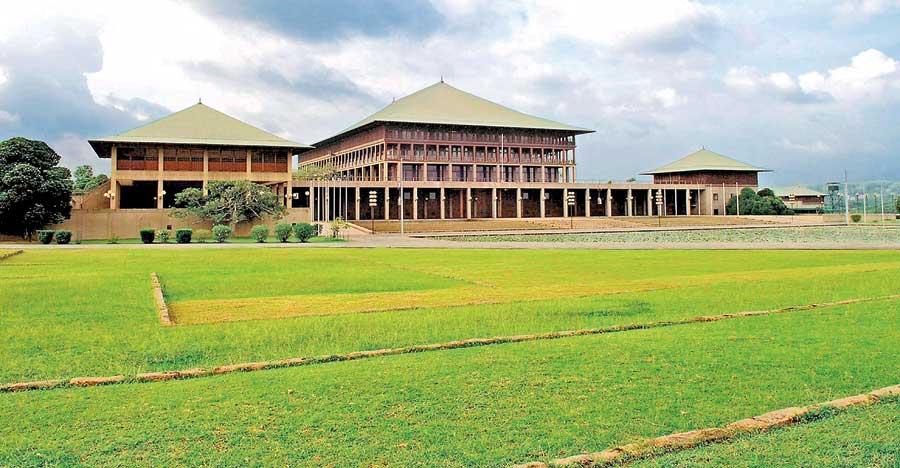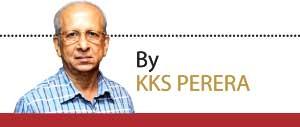Reply To:
Name - Reply Comment

A total of 225 lawmakers will comprise the next parliament, 196 of whom will be elected through popular vote while the remaining 29 will be picked from the so-called National List. 
Eight months after a crucial presidential election, Sri Lanka will go to Parliamentary polls on August 5 to elect their ‘honorable’ representatives to the 17th parliament, and 9th under PR system. Only a few have a comprehensive knowledge of the Proportional Representative electoral process. 196 elected through popular vote plus 29 from the National List will comprise a total of 225 lawmakers. There are only 160 electorates, but we elect another 36 to make it 196 elected members. The 36 seats were allocated to the nine provinces, four each, as apportioned by a delimitation commission, as per article 95 of the constitution. The 36 seats are divided among the electoral district, the current applicable numbers as given. Kandy, Matale, Batticaloa, Trincomalee, Jaffna, Galle, Matara, Gampaha and Kalutara districts one each, Vanni three and the rest two each.
Process through which the 196 are elected is as follows: The 25 administrative districts in the Island are reduced to 22, because the thinly populated Vavuniya, Mullaitivu and Mannar administrative districts are taken as one and called Vanni electoral district, while the Jaffna consists of the Jaffna and Kilinochchi administrative districts.
Article: 98 (4) -The total number of electors whose names appear in the registers of electors of all the electoral districts shall be divided by one hundred and sixty. The whole number, resulting from such division (any fraction not being taken into account) is … referred to as the “Qualifying Number” [QN].
The balance 160 of the 196 seats are allocated to the 22 districts. The number of registered voters in a given electoral district is then divided by the qualifying number [QN] to arrive at the number of seats for the particular district out of the 160.
Ex….- All island voter registration is 16,263,885. [Sri Lankans eligible to vote at this Parliamentary election, is about 270,000 more the registered at last November’s Presidential Poll.] Divide this number by 160, which gives us 101,645 as the answer – which is called the QN. In the Kalutara electoral district, the voter registration is 957,000, dividing that figure by the qualifying number 101,645 will give us nine [fraction not being taken into account]. This nine, plus Delimitation Commission’s allocated one from the 36 seats, makes a total of 10 MPs for the Kalutara electoral district.
"196 elected through popular vote plus 29 from the National List will comprise a total of 225 lawmakers. There are only 160 electorates, but we elect another 36 to make it 196 elected members"
As per Delimitation Commission’s ruling, Colombo gets two from the 36 seats though there are more voters registered in Gampaha, Colombo will always have one more seat than Gampaha. Article 98 (8) of the constitution is specific on issue of an extraordinary gazette annually on completion of the voter registration, showing how the 196 seats are allocated district-wise.
Article-99. [5]… The recognized political party or independent group which polls the highest number of votes in any electoral district shall be entitled to have the candidate nominated by it, who has secured the highest number of preferences, declared elected.
Party or group polling less than 5% of total valid votes are disqualified from electing representatives. [originally it was 12.5 % -, in 1989 it was amended by President Premadasa to please the then SLMC leader.] Total votes obtained by disqualified groups will be deducted from valid votes, and the number of votes resulting from such deduction is called the “Relevant Numbers of Votes.” [RNV]; and it shall be divided by the number of members to be elected less one, and if the result is a numeral, or if that number is a numeral and fraction, the numeral immediately higher is called as the “resulting number”[RN]. The number of votes polled by each party or group and independent group will be divided by RN to arrive at the number elected from each such party or group.
The national list nomination will have a maximum of 29 members. “After the official results of the election is released to the parties or independent groups which contested the elections, EC will inform the number of seats each party is entitled to from the national list proportionately allocating the 29. The final decision regarding national list appointees are with the general secretaries; they can ignore names of already nominated and resort to most undemocratic method by appointing even the voter rejected candidates as MPs, as the constitution doesn’t specifically mention national preference for minor ethnic groups, intellectuals, disabled people or females who are not privileged to contest and win for obvious reasons. This is an election-related issues that needs urgent attention of authorities. Legal and administrative reforms should be effectively addressed.
Setting up a Parliament Select Committee to take up such tasks, with powers to move forward with legislative reforms through Parliament, after consultations with a diverse range of stakeholders, is a must. It could also carry out post-election reviews of the process. Some of our election regulations are outdated, and haven’t ever been updated. The last Presidential Election highlighted the practical difficulties and high costs that result from a huge number of candidates in the contest, who fail to secure even one percent of the votes. For Aug 5, there are 26 independent groups vying for power in Colombo escalating the costs beyond Rs.10 billion!
Illegitimate campaigning on social media, with the quick increase in the use of social media are other vital areas that needs attention.